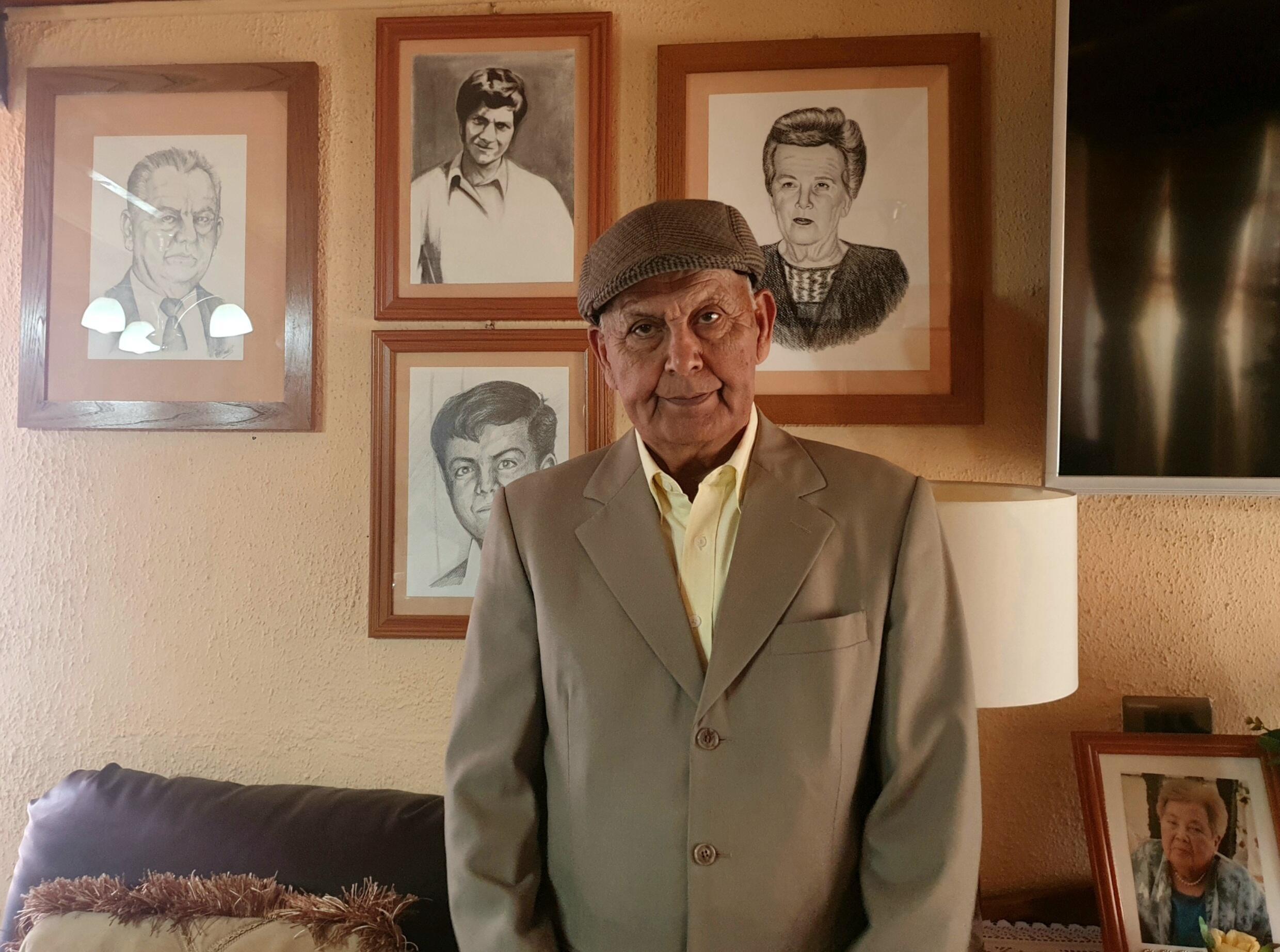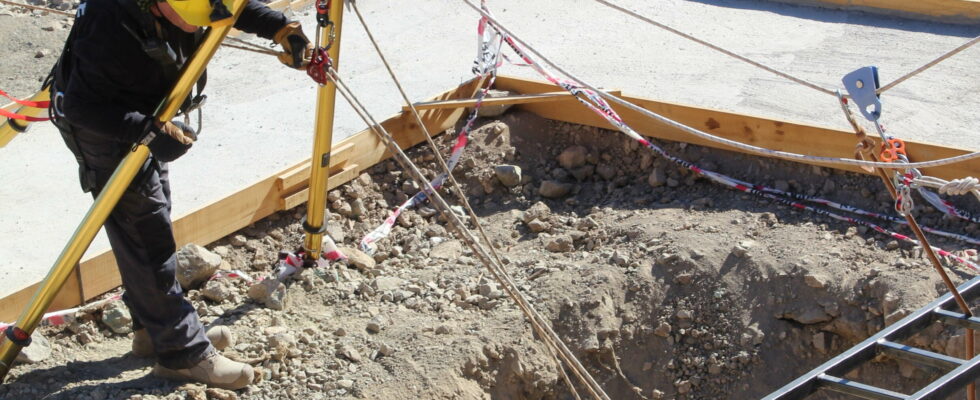Fifty-one years after Augusto Pinochet’s coup that overthrew socialist President Salvador Allende on September 11, 1973, the Chilean state is still searching for 1,469 people who disappeared during the dictatorship. A year ago, President Gabriel Boric announced a National Plan “Truth and Justice” to accelerate this research, with the help of artificial intelligence.
Santiago, Chile, 1975. Augusto Pinochet has been in power for two years, the hunt for opponents continues. Juan Luis Rivera is a trade unionist and communist activist, a party banned since 1973. On November 6 of that year, this trade unionist electrician was leaving his work, in the center of Santiago, when several people stopped him and made him get into a car. He was 52 years old.
Since that day, no one has heard from him again. Half a century after his disappearance, his daughter, Gaby Rivera, is still looking for him. She has become the president of the Association of Families of Disappeared Detainees (AFDD). Her father is one of the 1,469 disappeared persons from the dictatorship sought by the National Plan launched by Gabriel Boric August 30, 2023. It is the state that planned and carried out these crimes and it is the state that must take charge of the search for the truth. “, the left-wing president had then launched.
Also readChile: On September 11, 1973, Salvador Allende was overthrown in a military coup.
At least 3,200 people were murdered or disappeared during the Pinochet dictatorship (1973-1990). Since the return of democracy in 1990, the bodies of some 300 disappeared people have been identified. Most have been exhumed from mass graves. And the others? Who are these 1,469 disappeared? The vast majority are men, according to a study conducted by the Human Rights Program of the Chilean Ministry of Justice in 2023. One in two people were between 21 and 30 years old at the time of their disappearance, and one in two were workers.
Since the launch of the National Search Plan, 67 meetings have been held throughout the country. In total, 775 people have participated, according to the Chilean government – families of the disappeared and human rights associations. The aim of the Plan is to establish the circumstances of the disappearance of these victims and to trace the trajectory of the people between their arrest and their disappearance or death.
A major challenge since during the civic-military dictatorship, soldiers threw the bodies of several people into the ocean, weighted down so that they would never return to shore. A technique used to hide their crimes. Other bodies were exhumed by the armed forces, on the orders of Augusto Pinochet, to make them disappear. This is what happened in particular during the “television removal” operation (TV removal) in the 1970s and 1980s.
Between 1973 and 1990, “ The state apparatus has organized itself so that we can never find the missing persons “, laments Daniela Quintanilla, the Secretary of State for Human Rights at the Chilean Ministry of Justice, speaking to RFI. Some 50 people are part of the National Search Plan to take on the titanic task of searching for more than a thousand people. A team ” multidisciplinary “, emphasizes Daniela Quintanilla, composed of documentarians and experts in sociology and archaeology.
Since the Plan was launched, the team has investigated 52 locations that could be clandestine mass graves. Of these, 31 are currently under investigation. Six are expected to begin investigation by the courts and forensic science departments this year, with another six locations scheduled to be investigated in 2025-2026.
So far, none of the 1,469 missing people have been found since the Plan was launched. A situation far from being ” abnormal “, notes Cath Collins. This fine connoisseur of Chile post-dictatorship is professor of transitional justice at Diego Portales University in Santiago and Ulster University in Belfast. The first year of a program of this magnitude cannot immediately produce excavations and results. First, information must be collected and the research planned. ” she analyzes.
Artificial intelligence in the service of the search for those disappeared during the dictatorship
Gathering information is another challenge. And this is a first for the country: the government will rely on artificial intelligence to cross-reference data. This help could prove invaluable when it comes to reconstructing the days between the detention of these 1,469 people and their disappearance.
Since the return of democracy, ” For the first time, several administrations met to define the documents that could be useful to us, such as the Ministries of the Interior, Justice, Foreign Affairs, Defense, but also the National Archives. “, says Daniela Quintanilla. ” We have thus identified more than 36,000 documentary units. » That’s miles of documents, of which only 1% is digitized today.
The files from the 1970s and 1980s were typed. Once digitized, entire sections of these documents remain illegible. How can so much information be recovered and cross-referenced? Faced with these thousands of pages, the State has decided to design software that will cross-reference the data, thanks to the Chilean company Unholster, in order to trace the events between the detention of the missing persons and the last days before their disappearance. Initially, this platform will be accessible to the National Research Plan teams before ” be accessible to the general public by the end of 2024 “, announces Daniela Quintanilla.
And time is running out, because it is becoming increasingly difficult to cross-check the testimonies, find the bodies and even more difficult to identify the DNA of the bones found, deteriorated by humidity or water seeping into the ground.
On August 30, 2024, the International Day of the Victims of Enforced Disappearances, Gaby Rivera was critical of this plan: “ There is an urgent need to get results now. […] There have been many meetings and coordination bodies, but without results so far. […] The information is at the level of the armed forces, we must demand this information to break the pact of silence that prevents progress towards truth and justice. »
Also readInternational Day of Enforced Disappearances: “The State must mobilize all means to bring these crimes to justice”
Three hundred convicts who remain silent
At the end of last year, nearly 300 military and civilian personnel, including six women, were in detention in Chile for having committed a crime against humanity between 1973 and 1990 – this figure from the Chilean Gendarmerie was obtained by RFI after filing several appeals, including one with the Transparency Council. These former agents of the dictatorship who tortured, raped, and murdered do not speak.
” They know where certain people are buried, they know in which places investigations could be carried out. ” says Nelson Caucoto. The lawyer has been defending victims of human rights violations committed between 1973 and 1990 since 1974. He has filed complaints against Augusto Pinochet no less than… 300 times. Nelson Caucoto believes that he ” We must go to these prisoners. Some could speak to ease their conscience!he says. It is imperative for the current government that the National Research Plan is a success. » The search for missing persons is a « eternal debt ” for the Chilean State, believes the lawyer who shows himself ” optimistic ” in the face of this National Research Plan. ” How many countries in the world are still investigating crimes committed fifty years ago? ” he says.
The initiative is also welcomed by academic Cath Collins, who believes, however, that the Plan could prove to be ” more efficient ” She pleads for ” better collaboration ” between the executive and the legislative branches to move forward effectively in this research.
In any case, the scars of the dictatorship are still present in Chile. At every commemoration of the coup, the placards read:Where is it? ? (Where are they) flourish in the processions. More astonishing: on voting days, the names of people who have been victims of enforced disappearance appear on the electoral lists with the words “person absent due to enforced disappearance”. These people disappeared fifty years ago, but they do not have a death certificate.
There are those we are looking for and those the State is not looking for. Those for whom no complaint has been filed, their relatives too afraid of entering a police station after having been tortured themselves. Those whose names do not appear in the lists of victims of the reconciliation commissions established in the 1990s and 2000s, due to lack of evidence. So, their portrait has been enthroned in the living room for fifty years, like that of Patricio Araya. He is the brother of Manuel Araya, the poet’s former driver. Pablo Nerudathanks to whom an investigation into the poet’s death has been open since May 31, 2011. Manuel Araya, who died in June 2023, has never stopped talking about his brother, who died on March 22, 1976. I’m sure the authorities mistook him for me when they arrested him. ” he said repeatedly.

Today, 1,228 cases concerning human rights violations committed under Pinochet are on the judges’ desks. That is 500 fewer than last year. In Latin America, National Plans for the Search for Disappeared Persons have also been created in the last fifteen years. Mexicoin El Salvador and in Peru.
